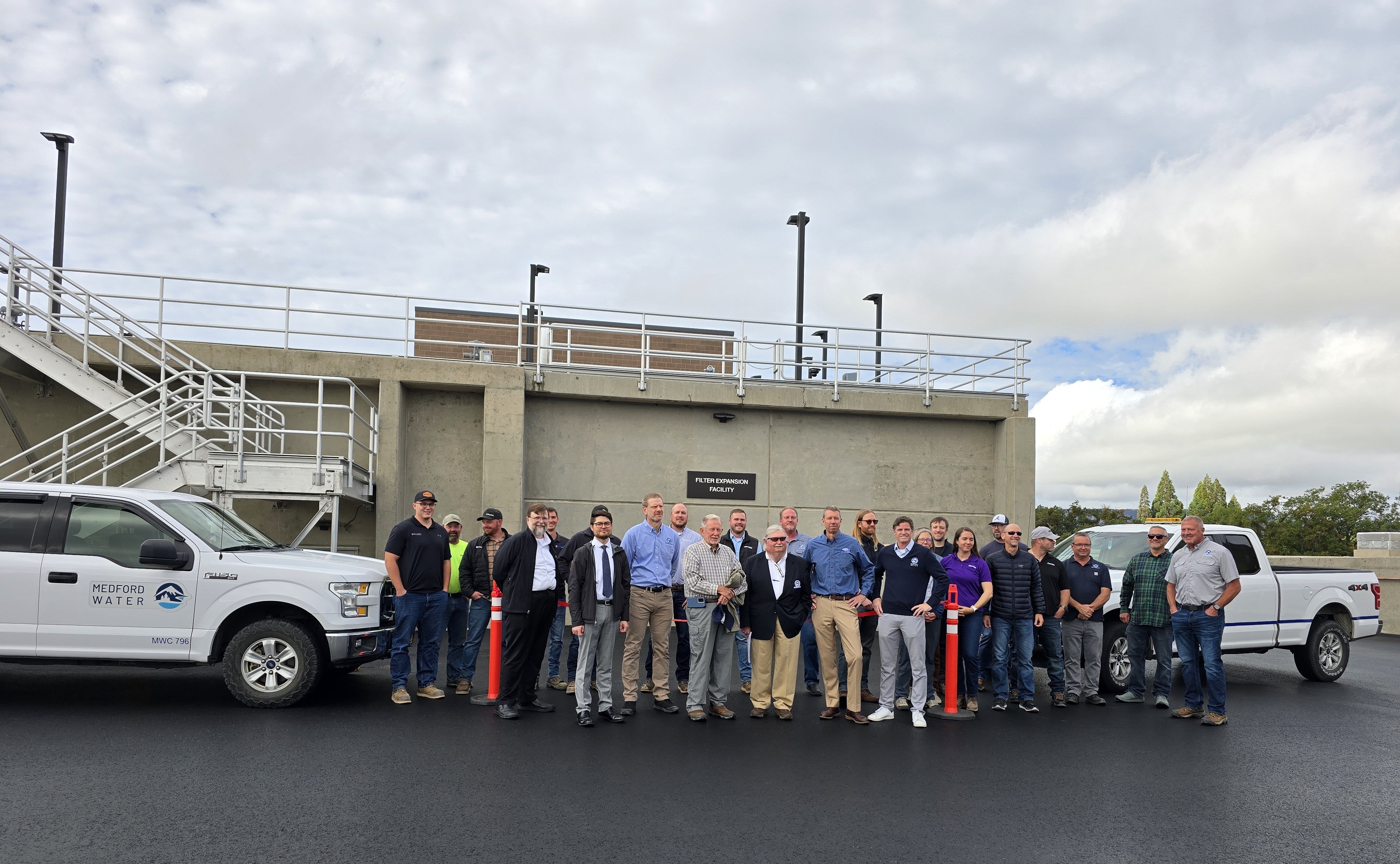Ongoing Projects
October 02, 2025
Ribbon Cutting Ceremony Celebrates Completion of $78M Water Treatment Plant Expansion Project
On Wednesday, October 1, 2025, Medford Water hosted a ribbon cutting ceremony to mark the completion of the expansion of the Robert A. Duff Water Treatment Plant. This project increased the plant's capacity to produce drinking water from 45 to 65 million gallons per day (MGD), as well as complete conveyance improvements necessary to deliver the 65 MGD into our system. The ceremony brought together Medford Water staff,...
